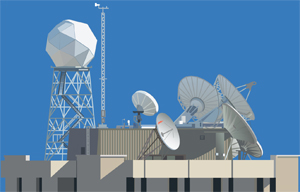Satellite-based Convective Initation Article Published
A paper titled "Nowcasting Convective Storm Initiation Using Satellite-Based Box-Averaged Cloud-Top Cooling and Cloud-Type Trends", authored by Justin M. Sieglaff, Lee M. Cronce, Wayne F. Feltz, Kristopher M. Bedka, Michael J. Pavolonis, and Andrew K. Heidinger, was published in the January 2011 Journal of Applied Meteorology and Climatology.
This paper describes using Geostationary Operational Environmental Satellite (GOES) imager cloud typing methodology and cloud top cooling rates using the 10.7 micron infrared channel to determine which maturing cumulus clouds were likely to grow into significant convection. The technique was shown to have a probability of detection of 55% and a false alarm rate of 25%. More information and real-time quicklooks from University of Wisconsin convective initiation methodology is available online.

4-panel display within AWIPS of Lightning Mapping Array (LMA) 8-km Psuedo-Geostationary Lightning Mapper (top left), GOES imager UWCI convective initiation (top right), GOES imager UWCI cloud-top cooling rate (bottom left), and GOES imager overshooting-top magnitude (bottom right) for the 24 May 2008 archive case event.

